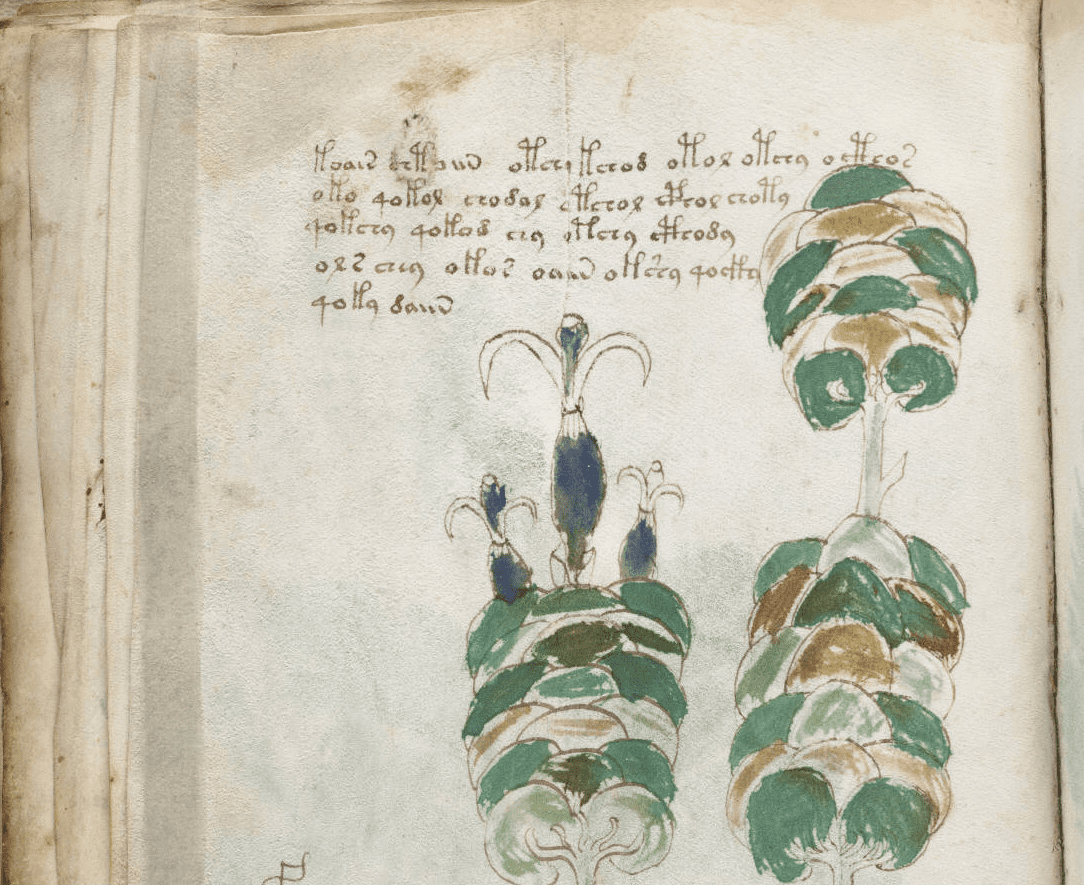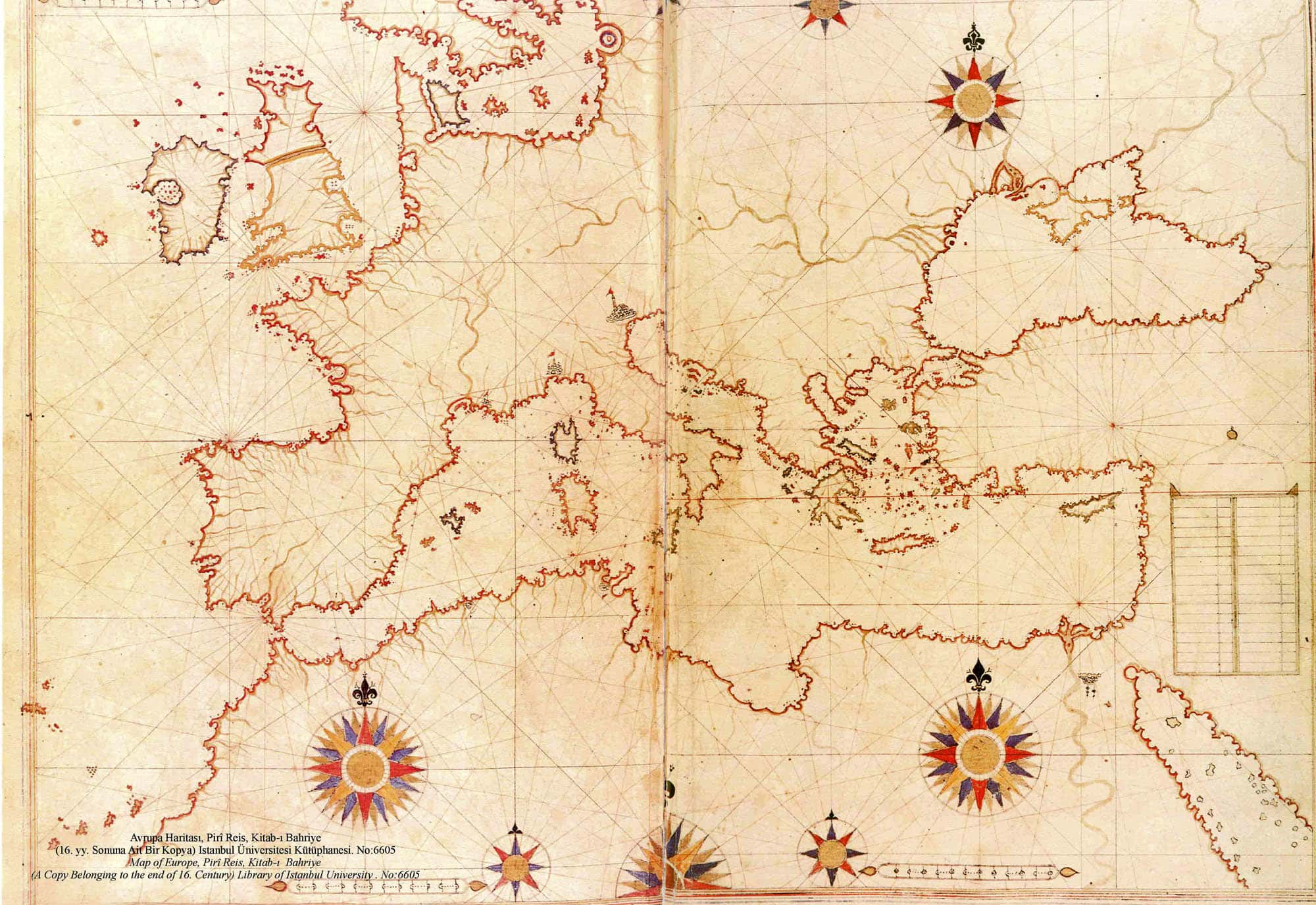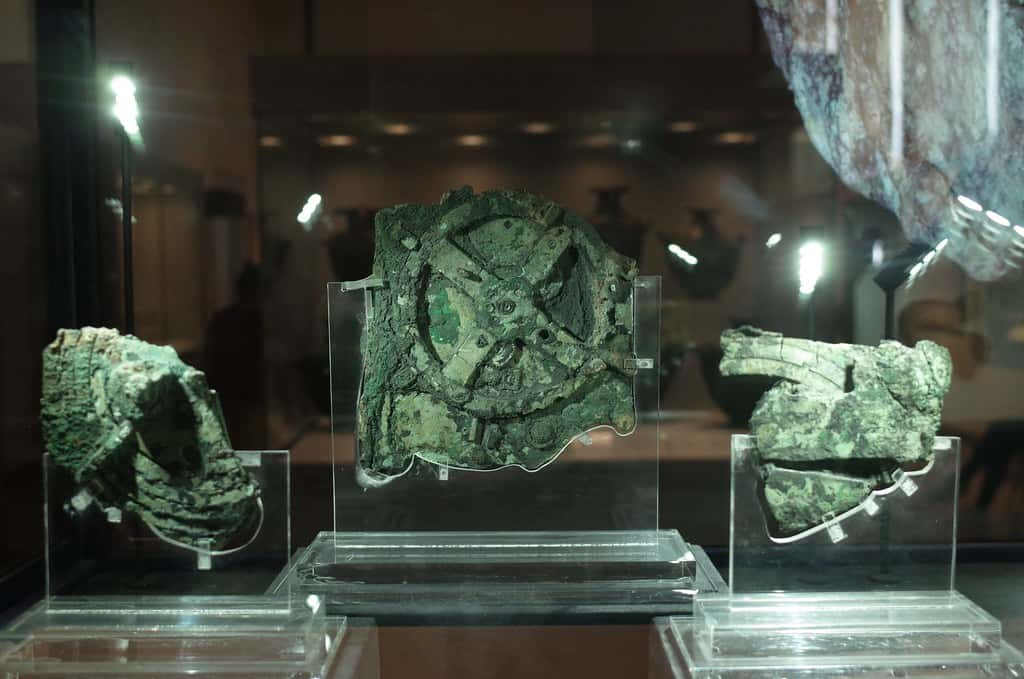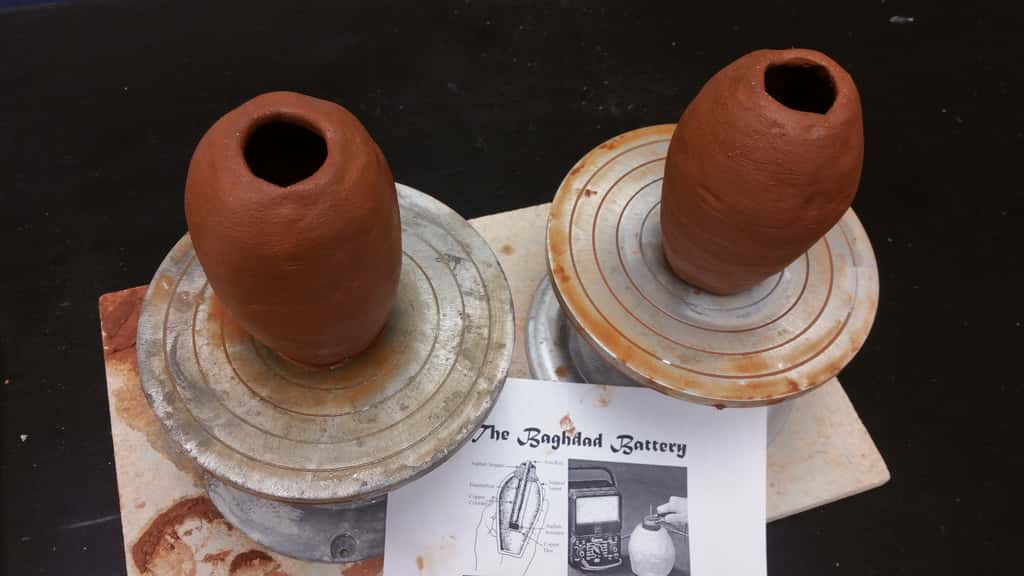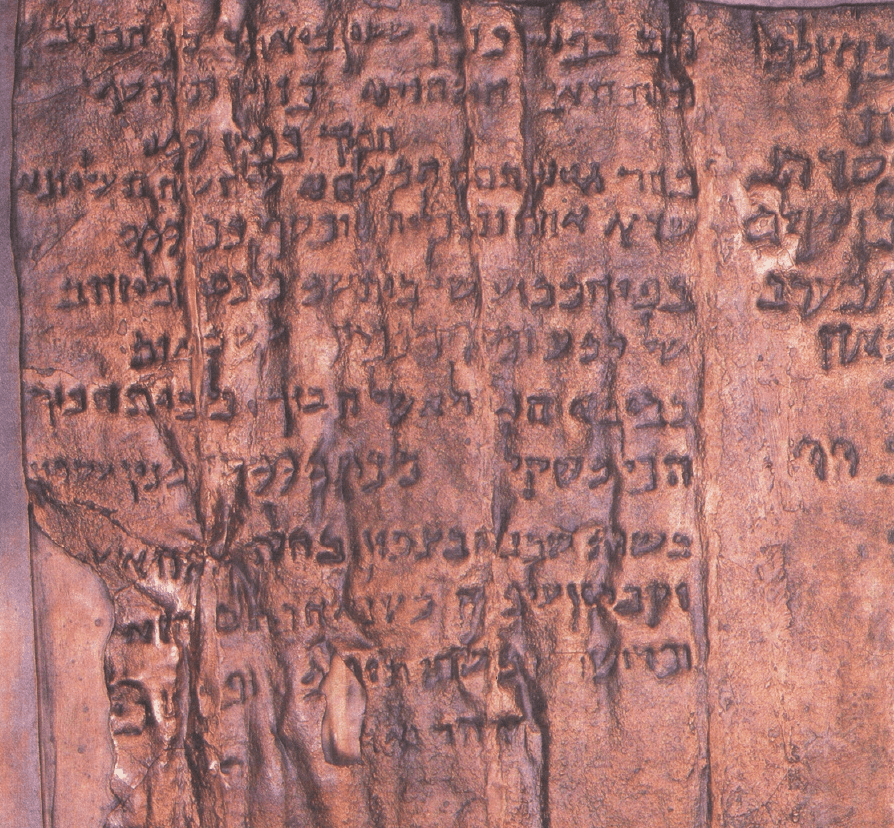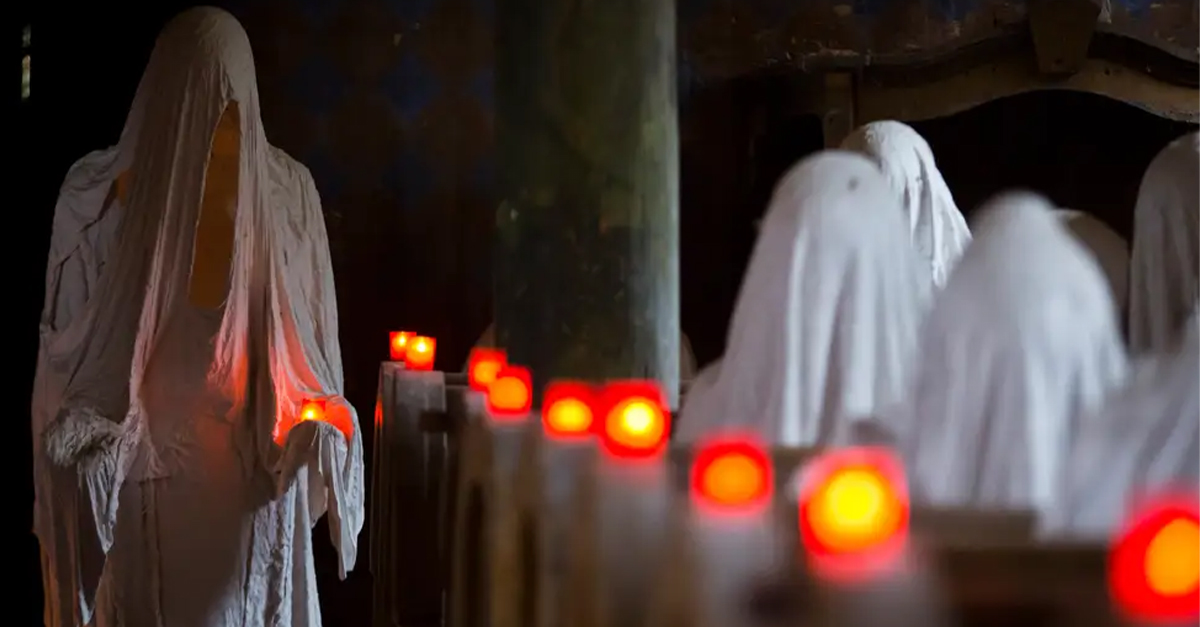The World's Most Puzzling Archaeological Finds
For centuries we've unearthed artifacts that tell us about the history of our planet. Nevertheless, some mysterious findings leave us puzzled. Are they remnants of forgotten civilizations or anomalies that have yet to be explained?

The Voynich Manuscript
In 1912, a Polish book dealer found a mysterious manuscript in a collection that belonged to the Jesuit College at Villa Mondragone, Italy. The Voynich Manuscript, often called the world's most mysterious book, is a 240-page manuscript bound in vellum and its origins trace back to the early 15th century.
 Unknown Author, Wikimedia Commons
Unknown Author, Wikimedia Commons
The Voynich Manuscript (Cont.)
The book is written in an unknown script that has defied the efforts of the world's best cryptographers. Moreover, the text is accompanied by colorful illustrations of plants that do not match any known species, alongside astrological symbols, strange diagrams, mystical animals, and bathing figures.
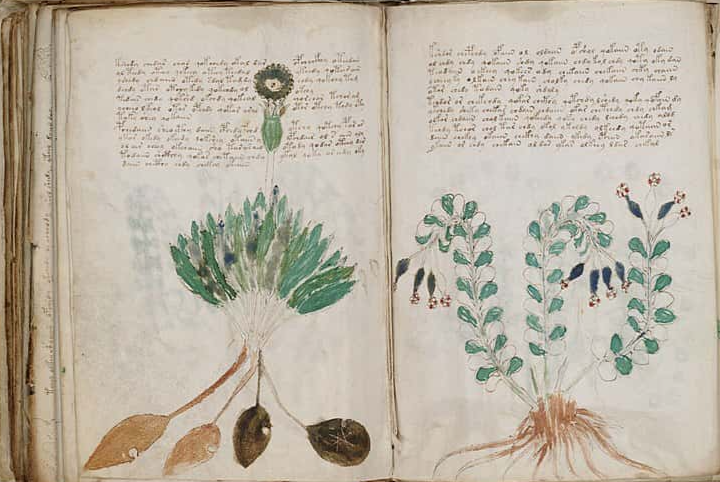 Unknown Author, Wikimedia Commons
Unknown Author, Wikimedia Commons
The Voynich Manuscript (Cont.)
Its purpose and creators are a matter of ongoing speculation. Scholars suggest it was a compendium of herbal medicine, while others believe it could be an alchemist's handbook or an elaborate hoax. Carbon dating suggests it was created between 1404 and 1438, but its language, sometimes called Voynichese, remains undeciphered.
Stone Spheres In Costa Rica
Las Bolas or the stone spheres of Costa Rica were first brought to light in the 1930s when United Fruit Company workers cleared land in the Diquís Delta. More than 300 of these spheres have been discovered. Some are only a few inches in diameter while others reach 6.6 feet.
 Rodtico21, CC BY-SA 3.0, Wikimedia Commons
Rodtico21, CC BY-SA 3.0, Wikimedia Commons
Stone Spheres In Costa Rica (Cont.)
Nobody knows for sure the exact purpose of these spheres. However, theories suggest they were symbols of power within the society as they were close to houses of tribe chiefs. Others believe they represent the solar system. They're made of gabbro, sandstone, and limestone. Unfortunately, some were destroyed.
 Axxis10, CC BY-SA 3.0, Wikimedia Commons
Axxis10, CC BY-SA 3.0, Wikimedia Commons
The Saqqara Bird
Before Wilbur and Orville Wright designed planes, the ancient Egyptians made a remarkable attempt that leaves us questioning their genius. The Saqqara Bird is a small wooden artifact measuring just over 7 inches in length. However, its streamlined shape and vertical tail fin bear a striking resemblance to modern gliders.
 Dawoudk, CC BY-SA 3.0, Wikimedia Commons
Dawoudk, CC BY-SA 3.0, Wikimedia Commons
The Saqqara Bird (Cont.)
The artifact was discovered in 1898 in a tomb near Saqqara, Egypt, alongside more traditional funerary items. Its design has sparked intense debates among scholars about whether it represents evidence of early aerodynamics. Supporters of the theory point to the aerodynamic design, which could create lift if subjected to airflow.
 Dawoud Khalil Messiha, Wikimedia Commons
Dawoud Khalil Messiha, Wikimedia Commons
The Hobbits Of Indonesia
During an archaeological expedition, archaeologists uncovered the remains of a previously unknown hominin species on the Indonesian island of Flores in 2003. Dubbed Homo floresiensis, these small-statured individuals, nicknamed hobbits, stood about 3.7 feet tall and lived before the arrival of modern humans.
 Rosino, CC BY-SA 2.0, Wikimedia Commons
Rosino, CC BY-SA 2.0, Wikimedia Commons
The Hobbits Of Indonesia (Cont.)
The hobbits' diminutive size and small brains, yet surprisingly sophisticated tool-making abilities, have fueled debates about their origins. Some researchers believe they are a distinct species that evolved from an early human ancestor through insular dwarfism. Others argue they might be modern humans affected by a genetic disorder.
 Cicero Moraes et alii, CC BY 4.0, Wikimedia Commons
Cicero Moraes et alii, CC BY 4.0, Wikimedia Commons
The Phaistos Disk
Unearthed in 1908, archaeologist Luigi Pernier found the Phaistos Disk during an excavation at the ancient Minoan palace of Phaistos on the island of Crete. This small, circular disk is made of fired clay and is estimated to have been created between 1850 BCE and 1600 BCE.
 C messier, CC BY-SA 4.0, Wikimedia Commons
C messier, CC BY-SA 4.0, Wikimedia Commons
The Phaistos Disk (Cont.)
The disk's surface is covered with 241 unique symbols arranged in a spiral that winds inward on both sides of the disk. They included images of tools, animals, plants, and human figures and were stamped into the clay using seals—a method that was highly unusual for the time.
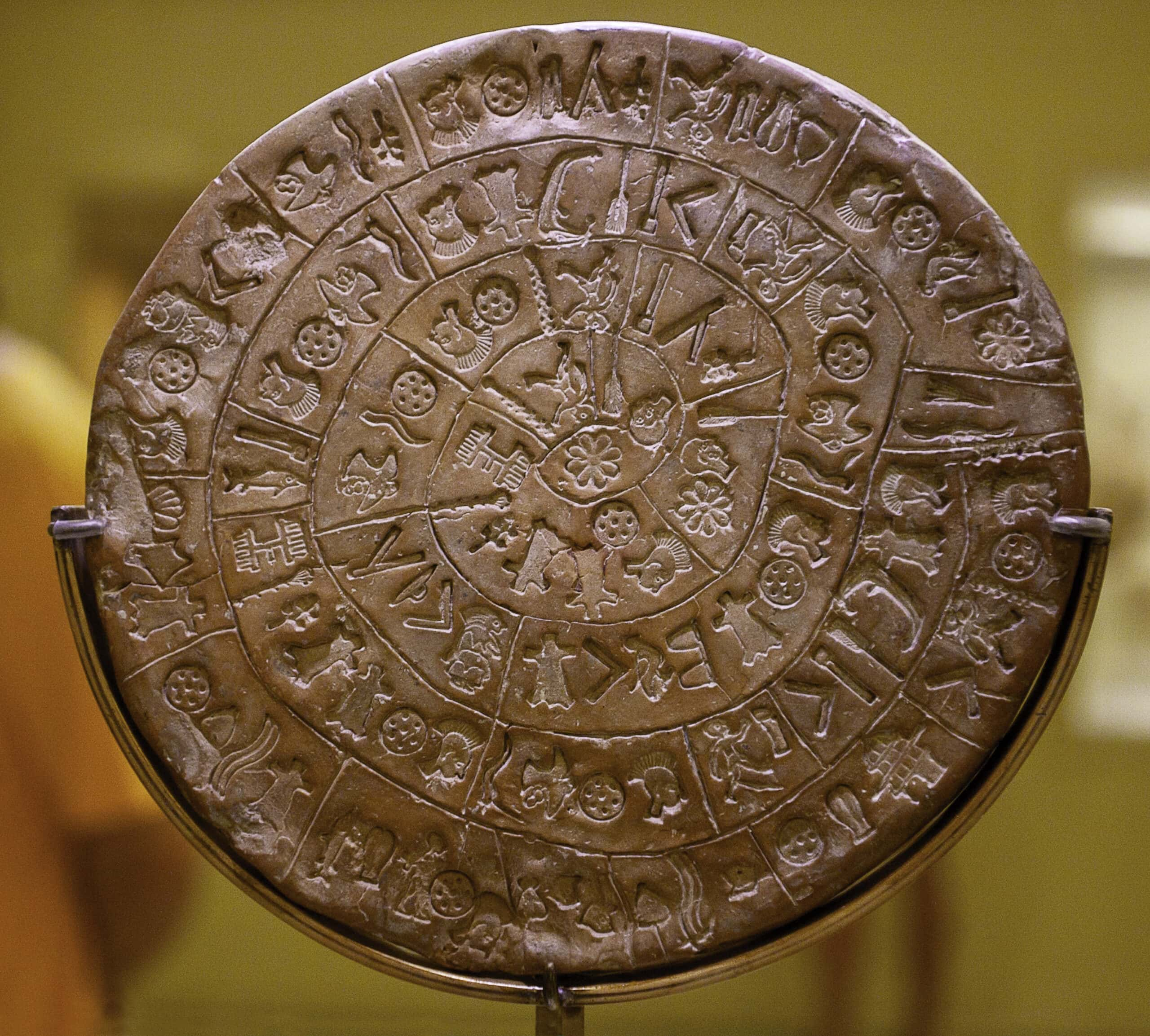 Aserakov, CC BY-SA 3.0, Wikimedia Commons
Aserakov, CC BY-SA 3.0, Wikimedia Commons
The Phaistos Disk (Cont.)
Archaeologists are still trying to figure out the disk's purpose. Some suggest it may have been part of a more extensive system of communication or mass production, but no similar artifacts have been found to confirm this. Adding to its mystery, the language remains undeciphered.
 C messier, edit by Bammesk, CC BY-SA 4.0, Wikimedia Commons
C messier, edit by Bammesk, CC BY-SA 4.0, Wikimedia Commons
Sanxingdui Bronzes
Discovered in 1929, the Sanxingdui bronzes date back to around 1200 BC. They include jade, gold masks, elephant tusks, and other items. The artifacts are attributed to the Shu Kingdom, a mysterious Bronze Age culture distinct from the more well-known Chinese dynasties of the time.
 Tyg728, CC BY-SA 4.0, Wikimedia Commons
Tyg728, CC BY-SA 4.0, Wikimedia Commons
Sanxingdui Bronzes (Cont.)
The bronzes are famous for their unique and surreal designs that feature massive masks with protruding eyes and human-animal hybrids. What makes them mysterious is their deviation from the typical art of early China with no show no clear connection to the Shang Dynasty, which dominated during the same era.
 Gary Todd, CC0, Wikimedia Commons
Gary Todd, CC0, Wikimedia Commons
The Piri Reis Map
Unlike other medieval maps, the Piri Reis stands out with features that were supposedly unknown at the time, such as what some interpret as the coastline of Antarctica without its ice cover. It was created in 1513, based on Greek maps and possibly charts from the legendary Library of Alexandria.
The Piri Reis Map (Cont.)
Ottoman admiral and cartographer Piri Reis created accurate depictions of Europe, Africa, and parts of the Americas. This has led to speculation that Piri Reis had access to ancient maps from a highly advanced but lost civilization. Critics argue that these anomalies are misinterpretations, but the map's precision remains extraordinary.
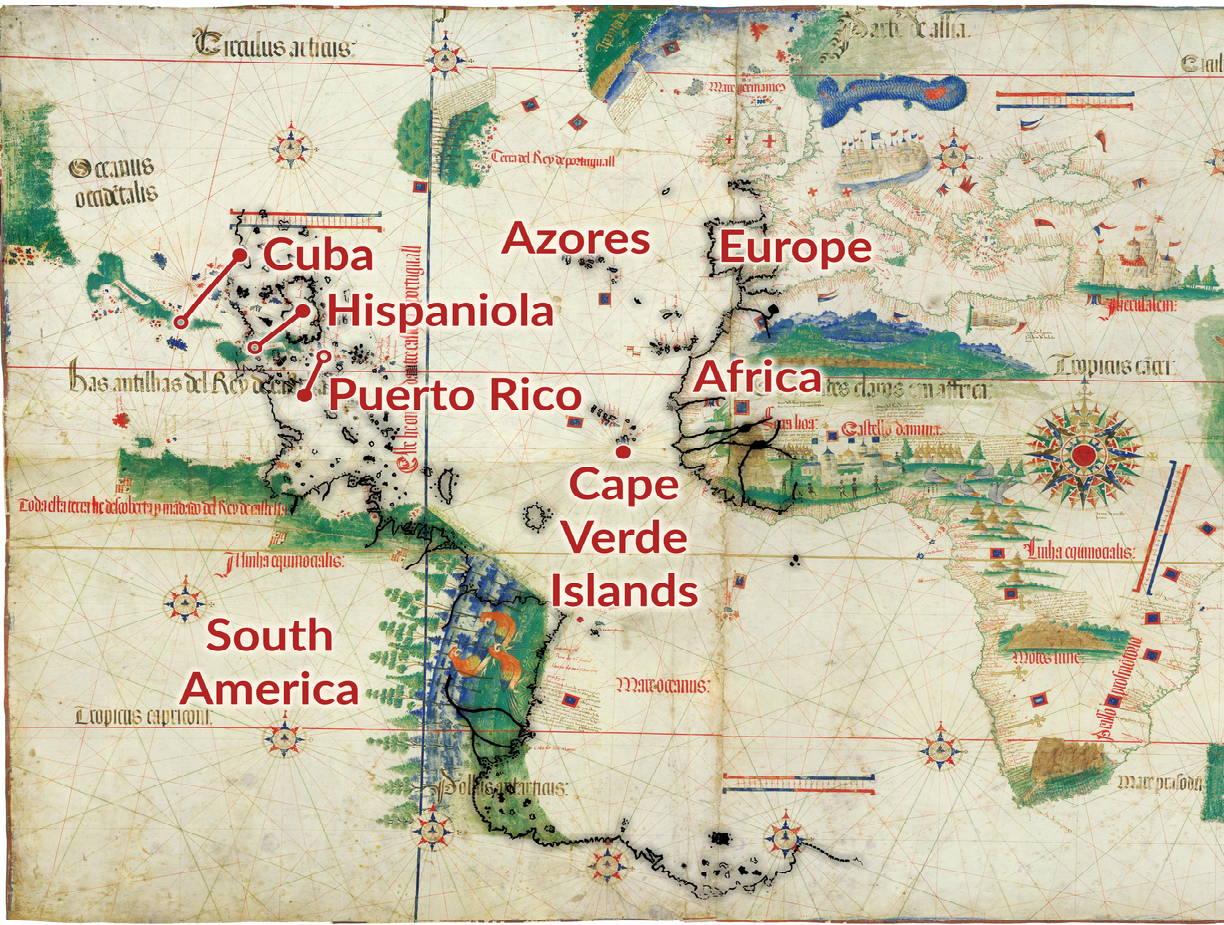 Rjjiii, CC BY-SA 4.0, Wikimedia Commons
Rjjiii, CC BY-SA 4.0, Wikimedia Commons
Shroud Of Turin
A few artifacts have intrigued humanity the way the Shroud of Turin did. It's a linen cloth measuring approximately 14. 5 feet long and 3.7 feet wide, bearing a faint image of a man who appears to have suffered injuries consistent with crucifixion.
 Secundo Pia, Wikimedia Commons
Secundo Pia, Wikimedia Commons
Shroud Of Turin (Cont.)
Believed to be Jesus Christ's burial cloth, it's one of the most debated relics in history because of its religious significance. Modern scientific examinations, including carbon dating, have suggested a medieval origin. However, no one fully understands how the image was formed.
 Secondo Pia, Wikimedia Commons
Secondo Pia, Wikimedia Commons
The Antikythera Mechanism
Many describe the Antikythera Mechanism as the world's first analog computer. It was probably used to predict astronomical events, such as eclipses, as well as to track the cycles of the Olympic Games. It was discovered in 1901 by divers exploring a shipwreck off the coast of Greece.
The Antikythera Mechanism (Cont.)
Using over 30 interlocking gears, it could perform calculations that wouldn't be matched until the development of mechanical clocks in the 14th century. It dates back to around 150 BCE and is made of bronze gears and dials encased in a wooden box.
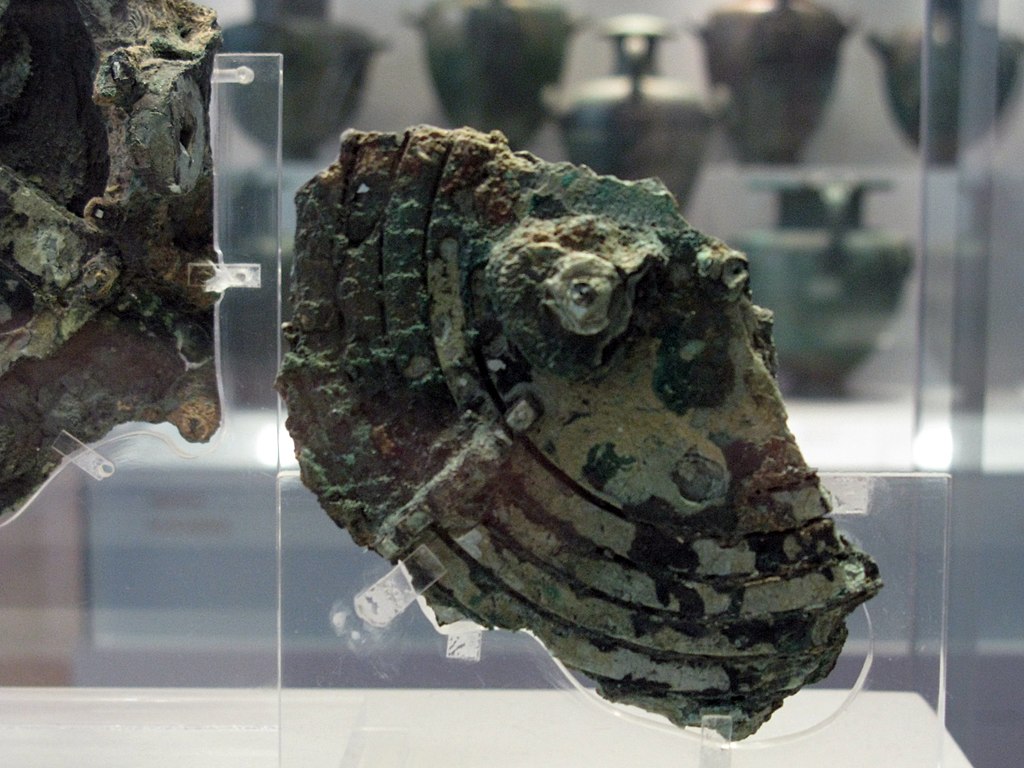 Tilemahos Efthimiadis from Athens, Greece, CC BY 2.0, Wikimedia Commons
Tilemahos Efthimiadis from Athens, Greece, CC BY 2.0, Wikimedia Commons
The Antikythera Mechanism (Cont.)
Today, the Antikythera Mechanism is displayed at the National Archaeological Museum in Athens. The sophistication of the device celebrates the technological capabilities of the ancient Greeks as it was centuries ahead of its time. It also suggests that similar devices may have existed but were lost to history.
 Joyofmuseums, CC BY-SA 4.0, Wikimedia Commons
Joyofmuseums, CC BY-SA 4.0, Wikimedia Commons
The Baghdad Battery
Wilhelm König, an archaeologist and director of the National Museum of Iraq at the time, discovered the Baghdad Battery near Baghdad, Iraq in 1938. It's made of ceramic jars that date to the Parthian period, around 150 BCE to 223 CE.
The Baghdad Battery (Cont.)
These jars consist of a terracotta vessel containing a copper cylinder and an iron rod. When filled with an acid like vinegar or lemon juice, they are capable of producing a small electric charge. Nevertheless, the purpose of the Baghdad Battery remains one of history's great enigmas.
 J J Osuna Caballero, Shutterstock
J J Osuna Caballero, Shutterstock
The Baghdad Battery (Cont.)
Some scholars believe it might have been used for electroplating jewelry or other artifacts, while others suggest it had religious or medicinal purposes. Critics argue there is no concrete evidence the jars were ever used as batteries, and the theory remains speculative.
 Ironie, CC BY-SA 2.5,Wikimedia Commons
Ironie, CC BY-SA 2.5,Wikimedia Commons
Roman Dodecahedrons
Made between the 2nd or 4th century, the Roman dodecahedrons are enigmatic bronze or stone objects. Many were found scattered across Europe, particularly in regions of the Roman Empire, such as France, Austria, Germany, Hungary, and England. Despite being widely studied, their purpose remains a mystery.
 Kleon3, CC BY-SA 4.0, Wikimedia Commons
Kleon3, CC BY-SA 4.0, Wikimedia Commons
Roman Dodecahedrons (Cont.)
Each fist-sized dodecahedron features 12 flat pentagonal faces, with a circular hole and small knobs on each corner. Some believe they were used as candle holders or to determine the best planting times based on sunlight patterns. Others suggest more symbolic roles as religious artifacts or fortune-telling objects.
 Hunt Museum, CC0, Wikimedia Commons
Hunt Museum, CC0, Wikimedia Commons
Roman Dodecahedrons (Cont.)
What's fascinating about the dodecahedrons is their distribution. They are not found in Mediterranean areas central to the Roman Empire but rather in its northern provinces. This has led to speculation that they may have held local significance that is yet to be discovered.
 Carole Raddato from Frankfurt, Germany, CC BY-SA 2.0, Wikimedia Commons
Carole Raddato from Frankfurt, Germany, CC BY-SA 2.0, Wikimedia Commons
The Lewis Chessmen
Away from its homeland, this set was found on the Isle of Lewis in 1831. The Lewis Chessmen are elaborately carved chess pieces made from walrus ivory and whale teeth. They're believed to have been crafted in Norway during the height of Scandinavian influence over the British Isles.
 Unknown Author, CC BY-SA 2, Wikimedia Commons
Unknown Author, CC BY-SA 2, Wikimedia Commons
The Lewis Chessmen (Cont.)
The set includes kings, queens, bishops, knights, rooks, and pawns, all with remarkable detail and expressive features. However, the real mystery lies in their origins and purpose. Why were they buried on the Scottish Isle of Lewis? Were they lost in transit or deliberately left as part of a ritual?
 Andrew Dunn, CC BY-SA 2.0, Wikimedia Commons
Andrew Dunn, CC BY-SA 2.0, Wikimedia Commons
The Lewis Chessmen (Cont.)
When they were first found, they belonged to a group of 94 objects. One of the pieces is currently privately owned, while the rest are distributed between museums in England and Scotland. The set inspired the wizard chess pieces in Harry Potter and the Philosopher's Stone.
 British Museum, Wikimedia Commons
British Museum, Wikimedia Commons
Chancay Textile Dolls
We don't know much about the Chancay culture because these people didn't document their daily lives. However, they left plenty of intriguing artifacts, including their brightly colored textile dolls. They are found in burial sites, frequently placed alongside the deceased.
 https://commons.wikimedia.org/wiki/File:Chancay_-_Textile_Doll_-_Walters_83768.jpg
https://commons.wikimedia.org/wiki/File:Chancay_-_Textile_Doll_-_Walters_83768.jpg
Chancay Textile Dolls (Cont.)
The Chancay culture thrived on the central coast of Peru between 1000 and 1470 CE. These dolls, often made from woven cloth, stuffed with plant fibers, and adorned with embroidered faces and clothing, were likely created as part of funerary practices. Nevertheless, some suggest they were toys for children.
The Copper Scroll
Although it's technically part of the Dead Sea Scrolls, which are made of parchment or papyrus, the Copper Scroll is etched into thin sheets of copper and rolled into two sections. It dates back to the 1st century CE and lists over 60 locations where treasures are supposedly hidden.
The Copper Scroll (Cont.)
The treasure described in the Copper Scroll was never found. However, its cryptic nature and the mystery surrounding its origins make it one of the most intriguing artifacts. Moreover, being made of metal suggests its creators intended it to endure, hinting at the importance of its message.
 Osama Shukir Muhammed Amin, CC BY-SA 4.0, Wikimedia Commons
Osama Shukir Muhammed Amin, CC BY-SA 4.0, Wikimedia Commons
Egyptian Funerary Cones
Ancient Egyptians left many artifacts, but the funerary cones raise several questions. They were small, cone-shaped artifacts made of clay during the New Kingdom period and showed the names and titles of the deceased. The cones were embedded into the walls of their tombs in the Theban Necropolis near Luxor.
 Rama, CC BY-SA 2.0, Wikimedia Commons
Rama, CC BY-SA 2.0, Wikimedia Commons
Egyptian Funerary Cone (Cont.)
Since names and titles were already written on the walls and tombs, the purpose of these cones remains a mystery. There must have been a reason that pushed Ancient Egyptians to make them in such great detail. However, no explanation was ever found.
 DORC, CC BY-SA 3.0, Wikimedia Commons
DORC, CC BY-SA 3.0, Wikimedia Commons
Folkton Drums
The Folkton Drums are three chalk cylinders discovered in a burial mound near Folkton, England, in 1889. Dating back to the Neolithic period, these carved objects are among the most enigmatic artifacts of prehistoric Britain as they were found alongside the remains of a child.
 Johnbod, CC BY-SA 3.0, Wikimedia Commons
Johnbod, CC BY-SA 3.0, Wikimedia Commons
Folkton Drums (Cont.)
Research hasn’t explained the meaning of the inscriptions, while some suggest that they resemble human faces. While they are called drums, there is no evidence they were used as musical instruments. Their true purpose remains unclear, as they might have been ceremonial objects or status symbols.
 Jononmac46, CC BY-SA 3.0, Wikimedia Commons
Jononmac46, CC BY-SA 3.0, Wikimedia Commons
Folkton Drums (Cont.)
A recent theory suggests they were probably tools for measuring and planning construction projects, such as Stonehenge, as they could standardize measurements. This is because their dimensions align with the standard units used in Neolithic Britain. Nevertheless, this is yet to be confirmed.
 Paul Hudson, CC BY 2.0, Wikimedia Commons
Paul Hudson, CC BY 2.0, Wikimedia Commons
Malagana Treasure
In 1992, a Colombian farmer fell into a hole in his field to find a massive treasure of golden artifacts. This accidental find led to the discovery of hundreds of delicately crafted gold objects, including masks, bracelets, ornaments, and ceremonial pieces, attributed to the Malagana culture.
 william.neuheisel, CC BY 2.0, Wikimedia Commons
william.neuheisel, CC BY 2.0, Wikimedia Commons
Malagana Treasure (Cont.)
The Malagana culture is an ancient society that thrived between 300 BCE and 300 CE. Sadly, much of the Malagana Treasure was looted and sold on the black market before authorities could secure the site, which led to the loss of invaluable historical context.
 Reg Natarajan from Vancouver, Canada, CC BY 2.0, Wikimedia Commons
Reg Natarajan from Vancouver, Canada, CC BY 2.0, Wikimedia Commons
The Cochno Stone
The Cochno Stone is a massive sandstone slab measuring 42 feet by 26 feet, covered in carvings of spirals, cup marks, and geometric patterns. Located near Clydebank, Scotland, the stone dates back to the Bronze Age and is considered one of Europe's most significant pieces of prehistoric rock art.
 William A. Donnelly, Wikimedia Commons
William A. Donnelly, Wikimedia Commons
The Cochno Stone (Cont.)
Rediscovered in 1887, the stone was reburied in 1965 to protect it from vandalism. Its 90 carvings are believed to have had ceremonial or astronomical significance, possibly representing maps of the stars, planets, territorial markers, or religious symbols. These images are considered among the finest petroglyphs in Scotland.
 James Harvey of Duntocher, Wikimedia Commons
James Harvey of Duntocher, Wikimedia Commons
The Cochno Stone (Cont.)
Although the stone was partially re-exposed in 2015, there's still debate about its true purpose since there are no written records of the carvings or who made them. Nevertheless, some archaeologists have drawn comparisons to other Neolithic sites in the British Isles, suggesting a shared cultural tradition.


